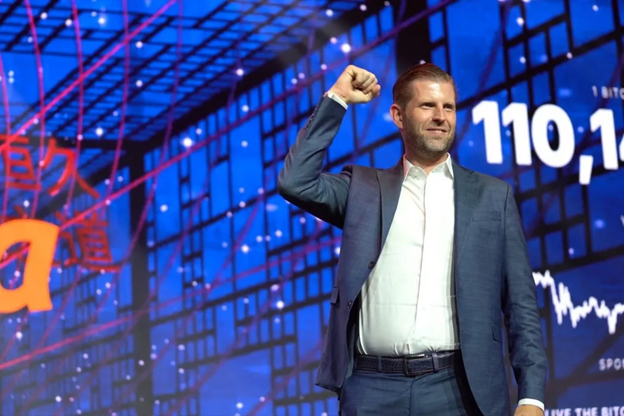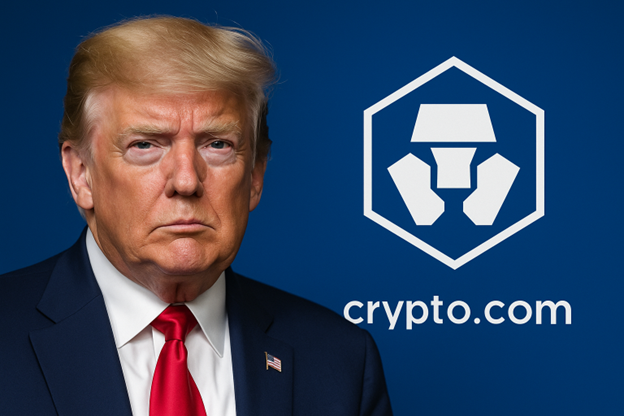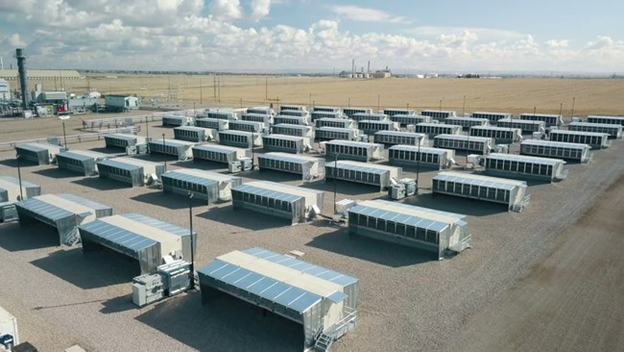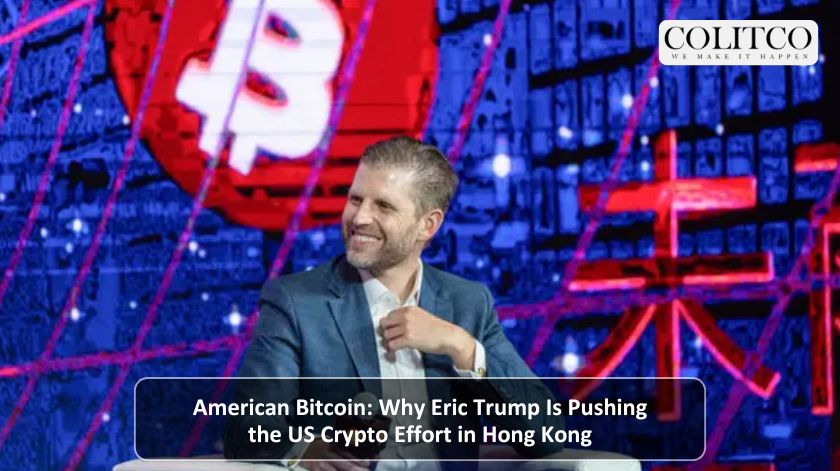Eric Trump, the younger brother of US President Donald Trump, is taking America’s new crypto dreams global. He spoke at the Ritossa Global Family Office Investment Summit in Hong Kong late last month. He launched a new project, American Bitcoin, a company to list on the Nasdaq through a merger with mining firm Hut 8.

Eric Trump introduces American Bitcoin during a high-profile visit to Hong Kong
The move is made at a turning point for the digital assets ecosystem. America is trying to figure out its own regulatory stance, and in Asia, Hong Kong is shaping itself to be a crypto hub. In this context, the Trump family is making bold moves to identify its brand with Bitcoin, stablecoins, and broader adoption of blockchain.

Trump Media Group’s CRO treasury strategy highlights a new approach to crypto-backed reserves
This article examines the Trump family crypto growth, the Nasdaq-listed US Bitcoin venture, its suggested stablecoin approach, and the altcoin and stable asset global treasury implications. It also examines the role of Crypto.com’s CRO treasury strategy and how Trump Media Group’s CRO strategy plays out in this new game of finance.
Trump Family Doubles Down on Digital Assets
The Trumps have not been strangers to the crypto conversation. Donald Trump himself moved from being an outspoken sceptic as president to becoming a straightforward participant in the digital economy with branded NFTs and open support for Bitcoin mining in 2024.
And now Donald Trump Jr. and Eric Trump are building on that evolution. Their foray into American Bitcoin is more than a hobby — it’s a sign that the Trump empire is researching long-term exposure to blockchain technologies.
At the Hong Kong meeting, Eric Trump positioned the project as part of a sweeping initiative to reestablish American dominance in financial innovation. By going all-in on crypto, the family is tapping into a story of national pride, financial nationalism, and the rise of digital treasuries.
American Bitcoin and the Nasdaq Entry

Hut 8’s mining infrastructure underpins American Bitcoin’s expansion strategy
At the centre of this initiative is American Bitcoin, a company created through the union of a listed mining business, Hut 8. Listing on Nasdaq confers on it the immediate credibility, liquidity, and exposure to the US capital markets.
Going public is a strategic decision. Compared to small token ventures or unregulated offshore exchanges, a Nasdaq listing offers regulatory compliance, transparency, and access to institutional investors. For a family business that thrives on publicity, the exposure of being associated with a Nasdaq-listed cryptocurrency project maximizes its exposure.
According to project overviews that have been circulated in Hong Kong, American Bitcoin would focus on mining operations, strategic partnerships, and treasury-backed stablecoin production. This makes it not only a miner aligned with the rest, but a diversified digital finance firm.
The Nasdaq listing is an indication that Wall Street demand for crypto-linked stocks remains strong in the face of volatility. Bitcoin mining, ETFs, and blockchain firms have attracted growing flows as investors diversify away from traditional equities.
The Stablecoin Angle: A Treasury Strategy in Motion
One of the most notable elements of the US launch of Bitcoin is its stablecoin endeavour. While details are limited at this time, the effort reportedly launches a U.S.-backed stablecoin to compete with international marketplaces.
Stablecoins have become the backbone of crypto liquidity, with USDT and USDC tokens facilitating billions of transactions daily. For the Trumps, creating a stablecoin is a matter of market opportunity for them — it’s a matter of making America the digital financial leader.
This is a part of broader treasury tactics common in the industry. Firms like Crypto.com, with its CRO treasury reserves, have set the pace on how to position exchange tokens as part of stable value frameworks.
Similarly, the Trump Media Group CRO approach can be accommodated through understanding how platform assets and token reserves can be leveraged to stabilise income streams.
By entering this space, American Bitcoin is implying projects far beyond mining. It has ambitions to create a parallel system of treasuries where U.S.-branded digital assets serve as a store of value and medium of exchange.
Asia Tour: Why Hong Kong Matters
That Hong Kong was selected as the announcement venue is no accident. Asia, and Hong Kong specifically, has become one of the world’s most competitive hubs for digital assets.
- Regulatory openness: Hong Kong regulators have actively welcomed crypto exchanges and token issuers, compared with the US enforcement-driven steps.
- Investor appetite: Asian family offices and high-net-worth individuals are steadfast believers in Bitcoin, stablecoins, and tokenised assets.
- Global positioning: For the Trump brand, showing up in Hong Kong reflects a desire to engage in global markets, not US politics.
Eric Trump’s utterance in Hong Kong put American Bitcoin forward as a go-between for American ingenuity and Asian adoption. By doing so, the initiative proclaims itself ready to go head-to-head with incumbents like Tether and Circle, as well as enter Southeast Asian markets, the Middle East, and elsewhere.
Implications for Altcoin Treasuries
Apart from Bitcoin and stablecoins, the Trump crypto boom has implications for altcoin treasuries. Treasury play is now a deciding factor on whether altcoins will survive or die.
Ethereum, Solana, and Avalanche projects have built huge war chests to spend on development and marketing. Exchange treasuries like Crypto.com’s CRO reserves, however, illustrate how tokens can stabilise communities.
If American Bitcoin can successfully establish a mining income- and exchange-partnership-backed stablecoin, it has the potential to set a new standard for treasury diversification. Altcoins will potentially find themselves competitively driven to join the American-backed liquidity wagon, reshaping reserve management.
This is where the Trump Media Group CRO model comes full circle — leveraging corporate media coverage along with token reserves has the potential to create a hybrid treasury model, blending finance with growth on the basis of audience.
Political and Regulatory Undertones
Any Trump venture has political undertones. While Eric Trump avoided uttering openly political remarks in Hong Kong, the undertone is clear: this enterprise is a soft-power mechanism.
With the 2024 US election cycle resumed again, sparking debates about Bitcoin, stablecoins, and central bank digital currencies (CBDCs), the Trump family’s actions are both telegraphing a message to voters and regulators.
If Donald Trump were to be back in the White House in 2025, American Bitcoin could be a flagship illustration of pro-crypto policy alignment. Even if that is not the case, the family’s presence will, at the very least, compel US regulators to offer more definition on mining, treasuries, and stablecoins.
Market Outlook: Can American Bitcoin Compete?
The big question on everyone’s lips is: can American Bitcoin deliver?
- Strengths: Nasdaq listing, Trump brand, and dual emphasis on mining and stablecoin development.
- Weaknesses: Uncertainty about the US regulation, a congested stablecoin market, and the danger of delivering in treasury management.
- Opportunities: Institute investor interest, Asian take-up urge, and political momentum in Washington.
- Threats: Competition from deep-pocketed players like Tether, Circle, and Binance; risk of regulator backfire.
From a commercial standpoint, American Bitcoin’s success will depend on how it differentiates its stablecoin strategy and leverages the political and financial ties of the Trump family.
If well executed, the initiative could be a giant U.S.-based digital finance platform with profound implications for Bitcoin mining, stablecoins, and altcoin treasuries.
Final Thoughts
American Bitcoin is a mining business — and more, it’s a symbol of where politics, family branding, and finance meet in the crypto world. Eric Trump’s Hong Kong address highlights the global landscape at play, and the emphasis on stablecoins and treasuries rather than the Bitcoin network suggests ambitions elsewhere.
The inclusion of crypto.com CRO crypto treasury reference entries and alignment with a Trump Media Group CRO strategy is as much a draw to emphasize that this venture is as much a financial architecture as it is a media presence.
It is still unclear whether American Bitcoin will be able to follow the industry giants, but what is definite is that now the Trump family has made a serious bet on digital assets. The cryptocurrency market of the world will look.
FAQs About American Bitcoin, the Trump Crypto Strategy, and CRO Treasuries
1. What is American Bitcoin?
American Bitcoin is a newly announced Nasdaq-listed venture created through a merger with mining firm Hut 8. The project combines Bitcoin mining operations with a plan to launch a U.S.-anchored stablecoin.
2. Why did Eric Trump announce American Bitcoin in Hong Kong?
Eric Trump presented American Bitcoin at the Ritossa Global Family Office Summit in Hong Kong to tap into Asia’s crypto-friendly environment. Hong Kong offers regulatory openness and access to wealthy family offices keen on digital assets.
3. How is American Bitcoin linked to the Trump family?
The project is led by Eric Trump and supported by Donald Trump Jr., expanding the Trump family’s direct involvement in digital assets. It follows Donald Trump’s public shift from crypto skeptic to active supporter.
4. What role does Hut 8 play in American Bitcoin?
Hut 8, a major Bitcoin mining company, merged with American Bitcoin to provide the operational backbone. The partnership gives the venture an immediate presence in the Nasdaq market.
5. What is the Trump Media Group CRO Strategy?
The Trump Media Group CRO Strategy refers to leveraging token reserves and treasury mechanisms to stabilize revenue. It aligns with broader trends of media platforms exploring blockchain-backed financial strategies.
6. How does Crypto.com’s CRO treasury relate to this?
Crypto.com manages a large CRO token treasury to secure liquidity and support its ecosystem. This serves as a model for how American Bitcoin might design its stablecoin and treasury framework.
7. What is unique about American Bitcoin’s stablecoin plans?
Unlike other projects, American Bitcoin is tying its stablecoin to U.S.-branded political and financial influence. This could make it a symbolic alternative to offshore-dominated stablecoins like USDT.
8. Why does Nasdaq listing matter for American Bitcoin?
A Nasdaq listing provides regulatory oversight, liquidity, and institutional access. This makes the project more credible compared to unregulated offshore ventures.
9. Could American Bitcoin’s stablecoin compete with USDT or USDC?
Competition will be difficult, but possible if the Trump-backed brand can secure regulatory clarity and investor confidence. The key will be trust in the treasury backing.
10. What does this mean for altcoin treasuries?
Altcoins may feel pressure to align with American-backed liquidity models. American Bitcoin’s entry could shift how projects design reserves and treasury strategies.
11. How does American Bitcoin tie into U.S. politics?
Any Trump family venture carries political weight. If Donald Trump re-enters the White House, this project could align with pro-crypto policy initiatives.
12. What are the risks for American Bitcoin?
The main risks are U.S. regulatory uncertainty, execution challenges in treasury management, and heavy competition from entrenched stablecoin issuers.
13. How is investor interest in mining-related crypto stocks?
Investor demand remains strong, with Bitcoin miners and ETFs attracting inflows as diversification strategies. A Trump-linked Nasdaq miner could gain additional visibility.
14. What is the treasury strategy behind American Bitcoin?
The project aims to combine mining revenues with a stablecoin treasury framework. This hybrid model seeks to provide stability while generating liquidity.
15. Why is treasury management so important in crypto?
Treasuries determine whether projects can survive downturns and scale effectively. Well-managed treasuries, like CRO reserves, give tokens resilience.
16. How might this affect global stablecoin regulation?
A U.S.-anchored, Trump-backed stablecoin could put pressure on regulators to accelerate stablecoin frameworks. It may also spark geopolitical debates about financial sovereignty.
17. Will Asian markets adopt American Bitcoin’s stablecoin?
Hong Kong and other Asian hubs are likely early adopters if the stablecoin offers liquidity and U.S. branding. Institutional investors in Asia already rely heavily on stablecoins.
18. How does this connect with Donald Trump’s previous NFT ventures?
Donald Trump’s NFTs introduced the family to blockchain monetization. American Bitcoin builds on this but moves toward infrastructure and treasury-backed finance.
19. Can American Bitcoin strengthen U.S. influence in crypto?
Yes, if successful, it could counterbalance offshore dominance in stablecoins. It also reinforces the narrative of America reclaiming leadership in digital finance.
20. What is the market outlook for American Bitcoin?
Market outlook is cautiously optimistic. Success will depend on execution, regulatory clarity, and the project’s ability to differentiate its stablecoin strategy.












